Superstar Annuals for Containers and Baskets
I demand a lot of my container plants. I expect them to bloom prolifically with little or no deadheading or to have fabulous foliage — preferably both. I don’t want to pinch them back, prop them up or do much more than water them regularly (and I do this with an automatic drip irrigation system to keep my hands free for that big, cold drink with a little umbrella in it). I have no tolerance for disease-prone, wimpy plants either. Only the very best will do, and after personally testing each of these I can vouch for their superstar status in the Pacific Northwest, while many of my horticulture colleagues will attest to their reliability in other areas of the United States too.
Have you tried these annuals? Several are new introductions for 2013 but are readily available in nurseries and online.
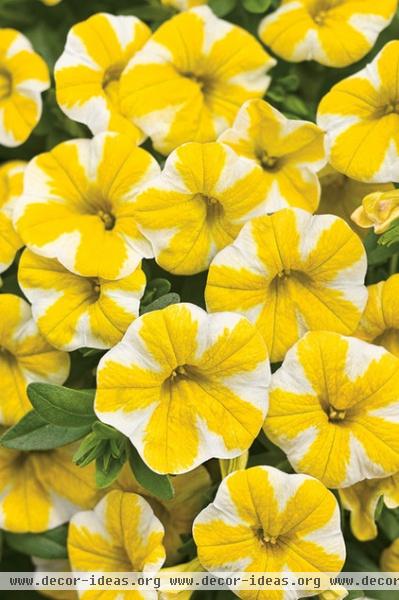
1. Superbells Lemon Slice
I am not a petunia fan. In my Seattle climate, petunias go mushy with rain and sticky with aphids, and they also have to be deadheaded regularly — way too much work for me.
Superbells Lemon Slice may look like a miniature petunia, but thankfully that is where the comparison ends. This new Calibrachoa hybrid is unfazed by summer rain and heat, and it blooms so prolifically that the foliage is barely visible.
The dense, mounding habit means it hugs the sides of containers or baskets nicely, while trailing 2 feet or so. This tidy habit earns it an 11 out of 10 from me.
Botanical name: Calibrachoa hybrid
Water requirement: Average
Light requirement: Full sun
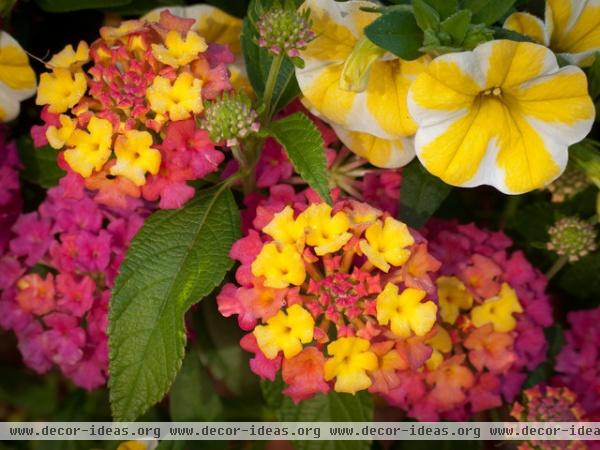
Design ideas: The multihued Luscious Berry Blend lantana shown here is a perfect color partner, repeating the yellow while also introducing hot pink and zesty orange. This lantana is vigorous enough to compete with Superbells too.
Lemon Slice would also make a vivid colorful ruffle under an arching purple fountain grass (Pennisetum setaceum 'Rubrum').
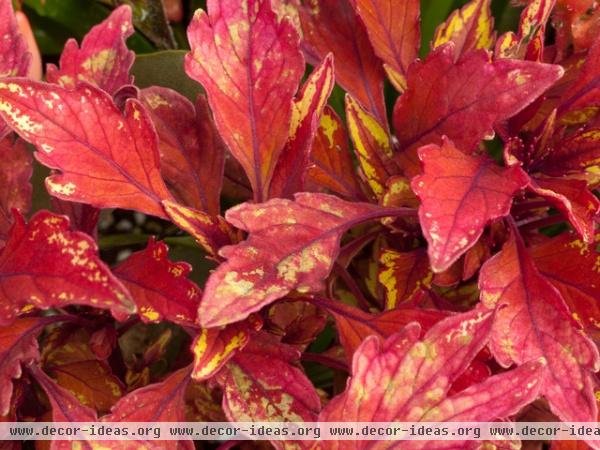
2. Spitfire Coleus
There are hundreds of coleus hybrids. While all are colorful, some are spindly, others require endless pinching back to keep the plants compact and some claim they can take full sun but really can’t.
Spitfire is different. I tested it in harsh conditions in 2012, and it came through with style. Despite intense summer sun, it did not show any signs of scorching. It never wilted in the heat and even stayed compact without pinching. The bronze foliage turns more raspberry in full sun and is accented with cream.
Botanical name: Solenostemon scutellarioides
Water requirement: Average
Light requirement: Full sun
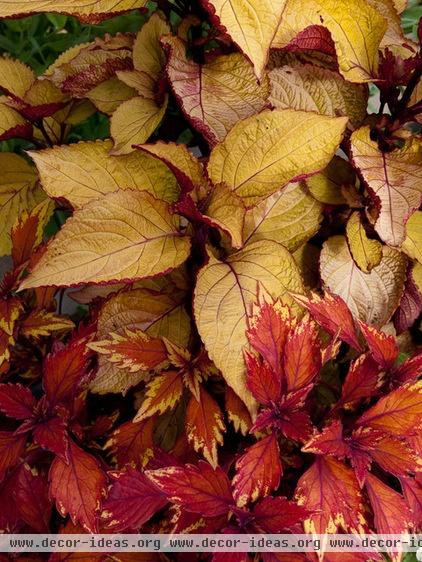
Design ideas: Emphasize the paler shades within Spitfire by combining it with Orange King coleus (pictured here). The leaves of the two coleuses may differ in size and pattern, but their shared color palette creates a sense of unity.
I also planted Spitfire with Luscious Piña Colada lantana, which has a soft creamy yellow flower. This proved to be a delightful, fresh-looking combination.
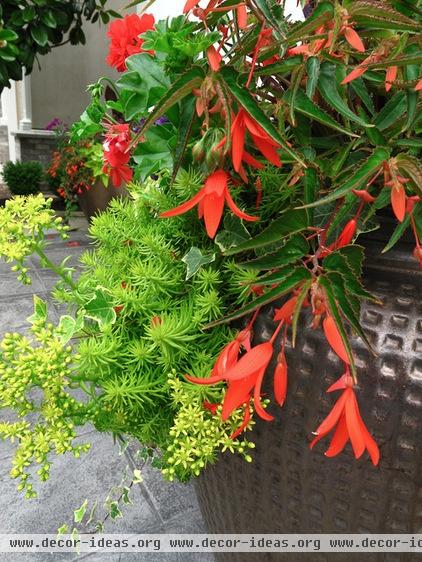
3. Bonfire Begonia
This sun-tolerant begonia is so reliable that I buy a dozen at a time when I see it appear in nurseries. I use these trailing annuals in hanging baskets or at the edges of containers, where they not only tolerate full sun but thrive in it. Bonfire begonia is shown here with Angelina sedum (Sedum rupestre 'Angelina').
The tubular orange flowers, often mistaken for fuchsias, are a hummingbird favorite, and I frequently find myself being heckled by these feisty little birds while I’m trying to finish my planting.
No deadheading is needed to keep this beauty blooming. Just be careful not to overwater, but otherwise sit back and enjoy.
Botanical name: Begonia boliviensis hybrid
Water requirement: Average
Light requirement: Full sun or partial shade
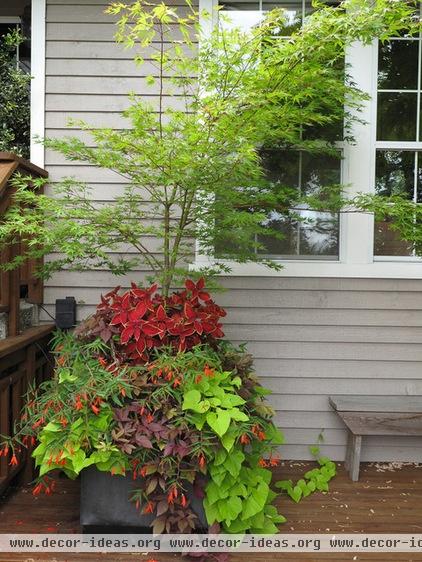
Design ideas: Allow Bonfire to send out dozens of orange sparks from a densely planted container.
This image shows the Arakawa Japanese maple (Acer palmatum 'Arakawa') underplanted with deep red coleus, chartreuse and bronze sweet potato vine (Ipomoea batatas), and Bonfire begonia. It also pairs well with blue or purple flowers and foliage, such as the fanflower described next.
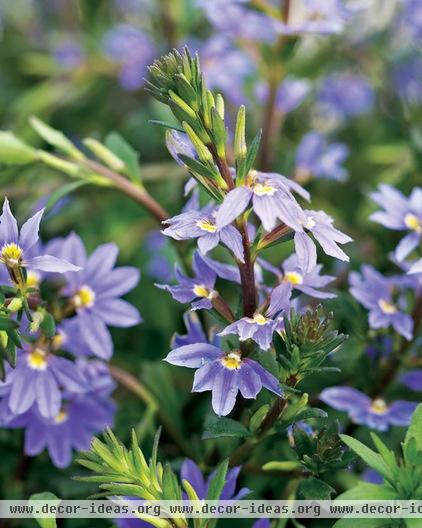
4. Whirlwind Blue Fanflower
This is one for the front of the pot. It is described as a spiller, since it trails loosely, yet it throws out flowering branches in a multitude of directions — making for some great, if unexpected, combinations. Rather than making it look untidy, this feature is actually one of the ones I love most about fanflower; it’s a filler and a spiller all in one.
The pretty periwinkle-blue fan-shaped flowers cover this unassuming annual until a hard frost. It is truly an outstanding performer.
Botanical name: Scaevola hybrid
Water requirement: Average
Light requirement: Full sun to partial shade
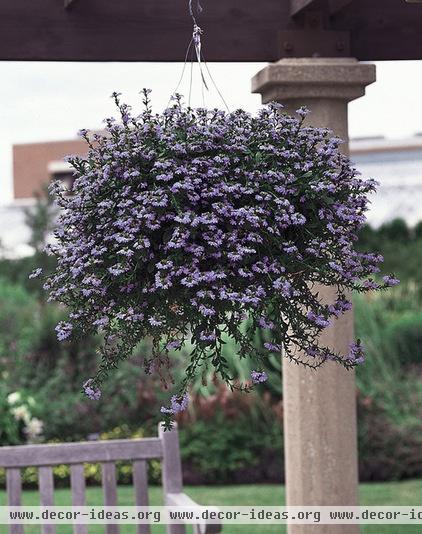
Design ideas: Plant a hanging basket exclusively with fanflower.
For more color add the bold orange Bonfire begonia and trailing sweet potato vine — the black foliage of Blackie (Ipomoea batatas 'Blackie') would be dramatic.
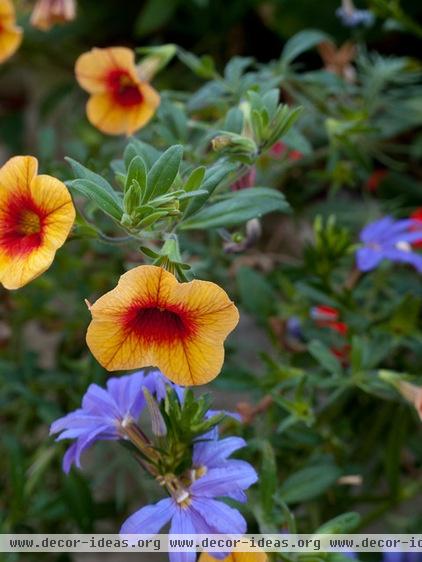
Or allow fanflower to mingle with other container plants, such as this Superbells Apricot Punch. For foliage interest I would add in one of the deep burgundy ground cover succulents such as sedum 'Blaze of Fulda' (Sedum spurium 'Fuldaglut'). The dark red rosettes would play off the similarly colored throat of the Superbells.
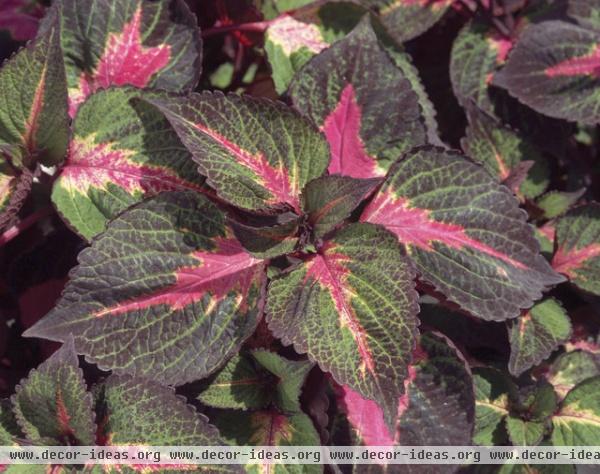
5. Beefsteak Plant
At first glance this looks like a coleus, yet it is sturdier than coleus and appears to be more slug resistant. This foliage plant needs no pinching back to look fabulous all season. It will typically reach 2 feet tall and 1 foot wide, making it suitable as a thriller in small pots or a filler in larger ones.
I have used beefsteak plant only in a shade container, but I believe the coloring is even more intense in full sun.
Botanical name: Perilla frutescens 'Magilla'
Water requirement: Average to low
Light requirement: Partial shade to full sun
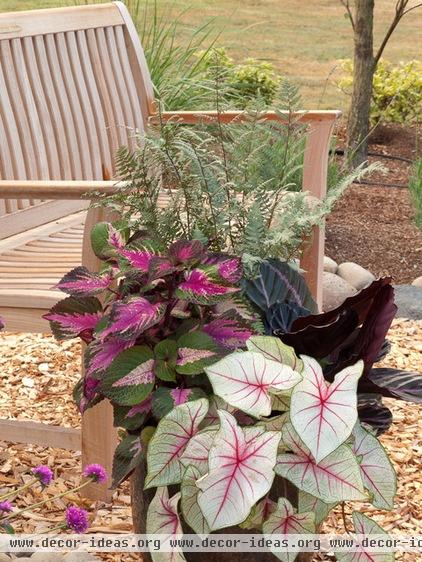
Design ideas: Use the bold splash of magenta as a springboard for your color scheme. This foliage-focused container design has it paired with a white caladium (Caladium bicolor) that has striking pink veins and the leathery black leaves of a Calathea. This Calathea cultivar, 'Dottie', has an interesting pink stripe around the perimeter, which also plays into the theme perfectly.
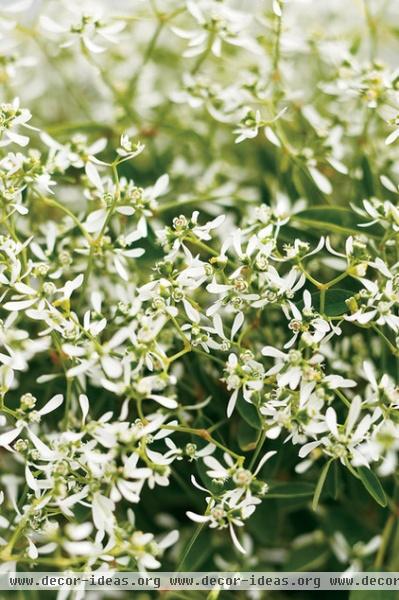
6. Diamond Frost
This frothy white blooming annual is not nearly as delicate as it appears. It's proven to be heat tolerant and drought tolerant, it has a nicely mounded habit, and it doesn’t need deadheading, so this pretty annual is firmly on my favorites list.
Expect Diamond Frost to grow to 12 inches tall and up to 18 inches across. It could be placed in the middle or at the edge of a container, where it will mound daintily over the edge.
Botanical name: Euphorbia graminea
Water requirement: Average to low
Light requirement: Full sun
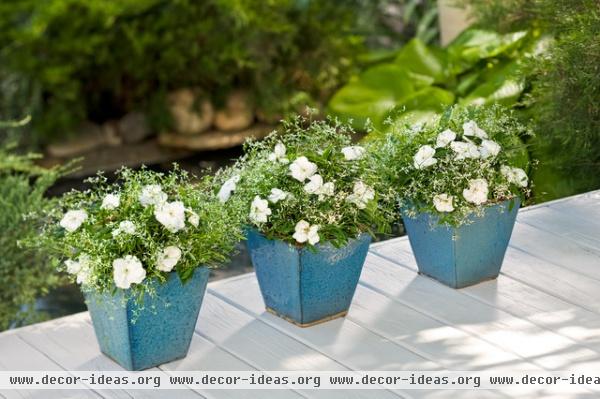
Design ideas: Plant some pretty party favors using white impatiens and Diamond Frost in colorful tabletop pots. Use these as place settings or set a trio on a table runner to decorate a buffet.
Note: in view of the fungal disease affecting impatiens in many areas of the United States, you may prefer to use the disease-resistant New Guinea impatiens.
More: The Secret Formula for Grouping Plants in a Pot












